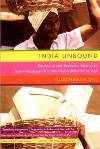 From Gurcharan Das’s India Unbound, on education since 1947, when India became independent of Britain and tried democratic politics mixed with heavily top-down, government-run economic planning:
From Gurcharan Das’s India Unbound, on education since 1947, when India became independent of Britain and tried democratic politics mixed with heavily top-down, government-run economic planning:
“The story of education in free India is a sad one. The government created a vast number of schools, practically free, after Independence. But they were so uniformly bad that the middle class shunned them and scrambled for places in a few private schools. Thus there rose a situation of scarcity, and you needed either money or contacts to get it. If this is the plight of the middle class, the situation of the masses is tragic. The state has failed to provide both the quantity and quality of education” (p. 54).
Parallels to the American experiment in government education?
When I discuss this issue, I frequently hear the complaint that if government didn’t run schools, poor children would be uneducated. My response has always been that government should then run farms and supermarkets to make sure that people don’t go hungry, and factories to make sure there are enough goods. After all, weren’t the collective farms in the Soviet Union a great success? Wait a minute. They weren’t.
The government should not run schools for the same reason that it should not run farms, factories, and supermarkets.